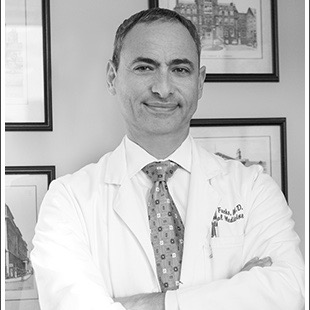[This post is grosser than most. You may not want to read it over lunch.]
Last year I warned that Clostridium difficile (C. dif.) infections are becoming more common.
C. dif. is a bacterium that infects the colon causing severe, sometimes life-threatening, diarrhea. C. dif. infection is frequently a complication of antibiotic use. Antibiotics can kill the normal bacteria in the colon and establish an opportunity for C. dif. to proliferate. After a course of antibiotics, a person can remain susceptible for a few months, and subsequent exposure to C. dif., usually in a healthcare setting, can lead to infection.
The mainstay of C. dif. treatment is more antibiotics, typically vancomycin or metronidazole. But these antibiotics don’t always work, and in many cases the C. dif. infection is not eradicated and the diarrhea recurs.
For over 50 years investigators have suspected that restoring normal gut bacteria could treat C. dif. infection. In 1950s the bacterium C. dif. had not yet been isolated, but the severe colon infection that sometimes followed antibiotic use was well known. In 1958, physicians in Denver treated patients with C. dif. colitis with enemas containing feces from healthy people. They reported that their patients rapidly and dramatically improved and urged further study of this treatment.
Since then, antibiotic treatment for C. dif. was discovered, and the idea of curing C. dif. by restoring normal bacteria languished, mostly because the thought of treating a patient by giving him feces is aesthetically so unappealing. Nevertheless as C. dif. became more prevalent in recent years, and as antibiotic treatments became less effective, many gastroenterologists have resorted in desperation to treating these very sick patients with donated feces, either by enema, or through a colonoscope, or through a tube inserted through the nose to the small intestine. Invariably the success rates were extremely high, but this treatment never gained legitimacy, partially because of the lack of a rigorous trial comparing it to accepted antibiotic treatment, and partially because of the enormous yuck factor.
This week the New England Journal of Medicine published online ” target=”_blank”>read the NY Times article about this study. Suffice it to say that the patients don’t see the infused solution. They only experience a plastic tube in their nose.
The results were quite dramatic. In fact, the study was stopped early because the differences between groups were so great. 81% of the patients receiving the feces infusion were cured after the first infusion, and most of the rest were cured with a second. In the antibiotic group about a third were cured, and in the group receiving vancomycin followed by the intestinal flushing solution, only about a quarter were cured. Many of the patients receiving antibiotics requested the feces infusion after the trial ended.
This should convince physicians and patients that if a first course of antibiotic treatment has failed, fecal infusion is a rational next step. It is hoped that eventually researchers will find and culture the bacteria that are responsible for inhibiting the growth of C. dif. so that eventually patients can swallow capsules of live cultured bacteria, eliminating the need to deal with human waste.
Learn more:
” target=”_blank”>Faecal transplants succeed in clinical trial (Nature)
” target=”_blank”>Fecal Microbiota Transplantation — An Old Therapy Comes of Age (NEJM Editorial)
My previous posts about C. dif.:
” target=”_blank”>A New Treatment for Clostridium difficile
Important legal mumbo jumbo:
Anything you read on the web should be used to supplement, not replace, your doctor’s advice. Anything that I write is no exception. I’m a doctor, but I’m not your doctor.






















 More news and opinions than at a Shabbat dinner, right in your inbox.
More news and opinions than at a Shabbat dinner, right in your inbox.